Are you after a fishing adventure that’s as big as it gets? Mammoth Lakes is true to its name, offering up mammoth fishing opportunities. Nestled high in California’s Eastern Sierra, this charming mountain town swaps ski boots for tackle boxes when the snow melts. Fishing in Mammoth Lakes is all about reeling in memories (almost) as big as your catch.
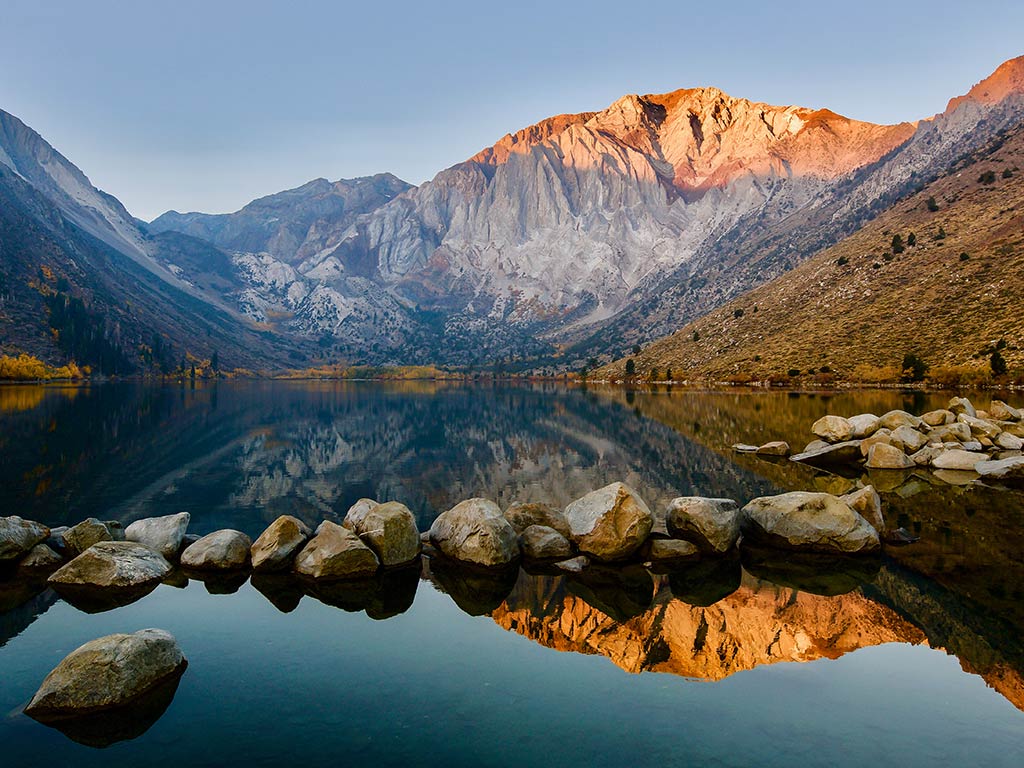
Sparkling alpine lakes, wild Trout streams, and a cool mountain breeze set the scene while you battle oversized Rainbows, Browns, and more. Cast your line at dawn on Convict Lake, drift flies on Hot Creek, or explore hidden gems tucked among snow-capped peaks. Ready to plan your Mammoth Lakes adventure? Here’s what you need to know before you grab your rod and head for the hills…
Best Fish to Target in Mammoth Lakes
Mammoth Lakes’ waters are teeming with plenty of Trout varieties just waiting to bite. Whether you’re after a cooler full of tasty table fare or dreaming of coming face-to-gills with jumbo-sized trophy varieties, there’s no shortage of fish to target. Let’s dive in and see what’s biting:
Rainbow Trout

We couldn’t start this list with anything but the undisputed star of Mammoth Lakes. Yep, we’re talking about Rainbow Trout! These shimmering beauties put this area on the map for anglers far and wide. They’re stocked in abundance and truly thrive in the region’s cool, clear lakes and streams. Rainbows promise fun action, tasty table fare, and some stunning catches for your camera roll.
So, how can you hook into a mammoth Rainbow? Well, spring through fall is the prime time, with late spring and early summer offering up peak action. The lakes warm up just enough to get these greedy Trout feeding closer to the surface. Casting from shore, trolling by boat, or drifting bait in one of the area’s alpine creeks… You’ve got options aplenty. Bring a light-to-medium rod and a bit of patience, and prepare for plenty of bites. Power bait and worms are classic tried-and-true methods, but fly fishers can have a field day here too, especially at dawn or dusk.
Brown Trout

Next up, we’re tackling Brown Trout – the more sly cousin of the Rainbow and a true prize for anglers who love a challenge. Mammoth Lakes is home to some trophy-sized Browns lurking in deeper, cooler waters. Hooking into one of these golden-spotted species is enough to make any fishing trip legendary! Bring a bit of stealth and a dash of patience, and make sure you gear up with a strong yet sensitive rod. Browns love to put up a fight.
These fish are known for being smart and selective, which just adds to the thrill of chasing ’em. Browns are most active from spring through fall, with early mornings and late evenings being the best time to target them. During the warmer summer months, they stick to deeper, cooler pockets of water. Fly fishing is a favorite technique for these fish – think streamers, nymphs, and dry flies that match the local hatches. However, trolling or casting lures like spinners and spoons can also do the trick if you’d rather stick to spin tackle.
Brook Trout
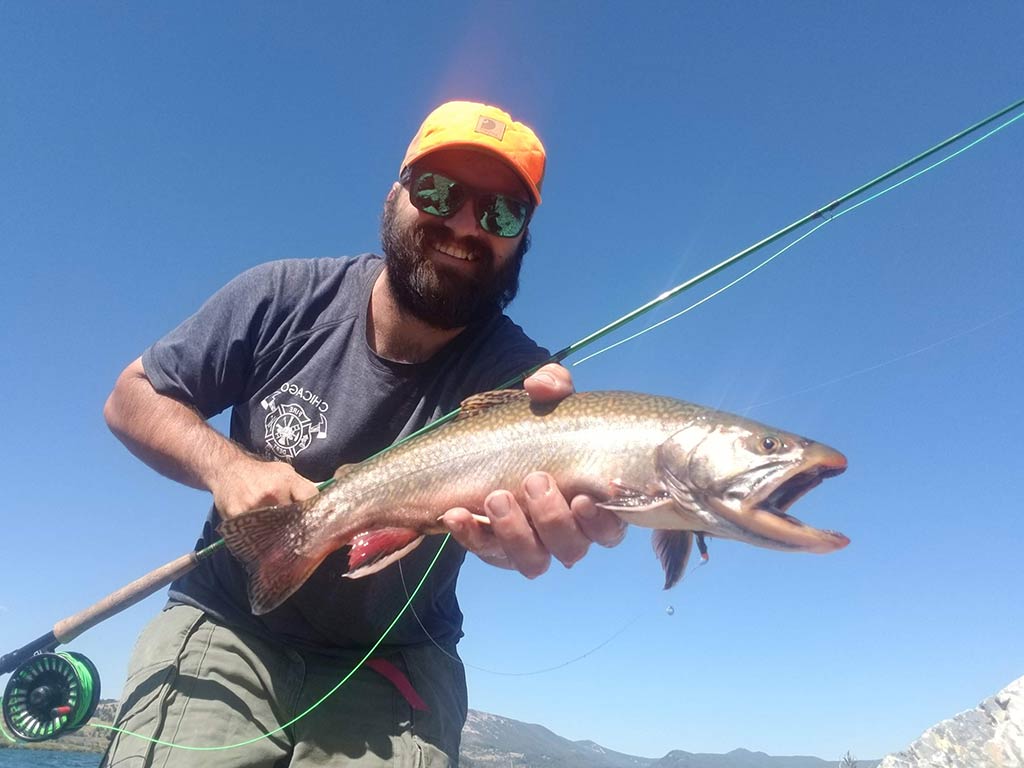
Next up on the list is the Brook Trout, often considered to be the star of Mammoth Lakes’ mountain streams and high-altitude lakes. These colorful fish are a favorite among fly anglers and anyone who appreciates fishing in postcard-worthy surroundings. Whether you’re exploring hidden streams or relaxing by a quiet lake, hooking into a Brookie is pure mammoth magic!
Brookies thrive in cold, clear waters, making spring and early summer the best time to target them. But you’ll also find them biting through fall. Early mornings and dusk are when they’re most active, snatching flies off the surface or darting after small insects and bait fish. Fly fishing is a classic choice when it comes to hooking into these guys, while light spinning gear can do the trick too, especially with small spinners or worms.
Golden Trout
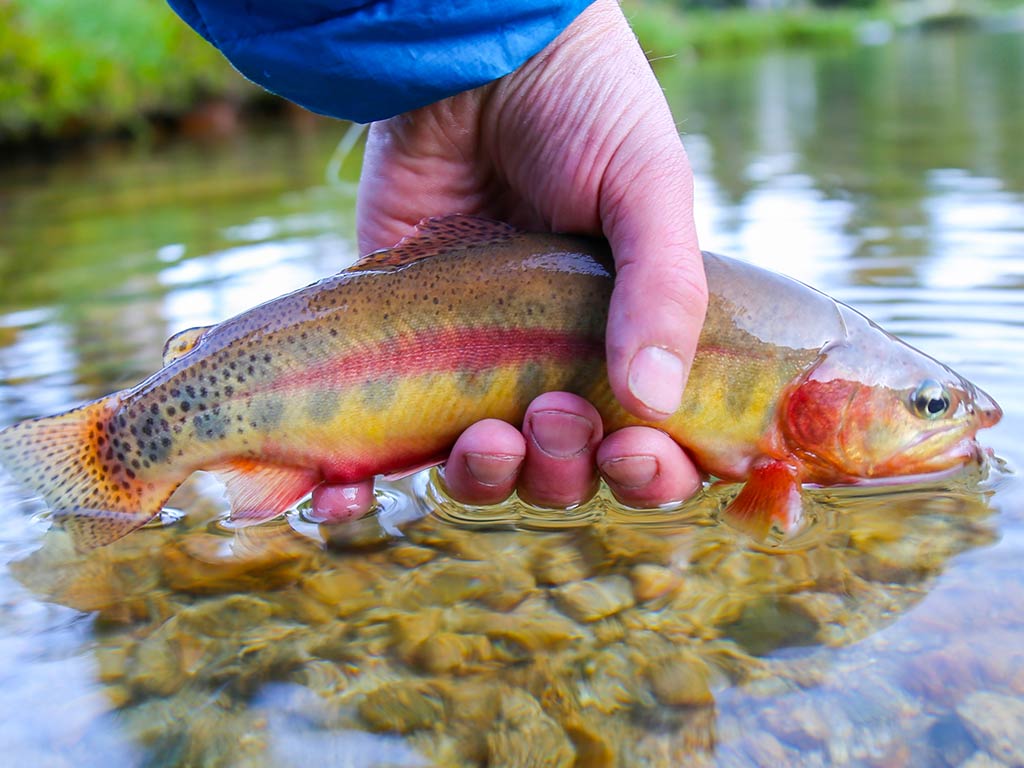
Last but certainly not least, we’ll talk about one of the lesser-known jewels of Mammoth Lakes. The Golden Trout. With their fiery colors and high-altitude hangouts, these fish are a bucket-list catch for many anglers who crave adventure and gorgeous backdrops. Native to California’s Sierra Nevada, Goldens are right at home in Mammoth’s remote lakes and crystal-clear streams.
Targeting Golden Trout is all about the experience. Think hiking into hidden lakes and casting into water surrounded by rugged peaks and open skies. Late spring through early fall is the sweet spot, when melting snow feeds the streams and these fish are actively feeding. Dry flies, small nymphs, and tiny spinners are top picks to lure them in, while a lightweight fly rod or ultralight spinning setup is all you need to match their size and spirited fight. Landing a Golden Trout isn’t just about the fish. It’s about the journey into the wilderness and the bragging rights that come with it.
How to Go Fishing in Mammoth Lakes
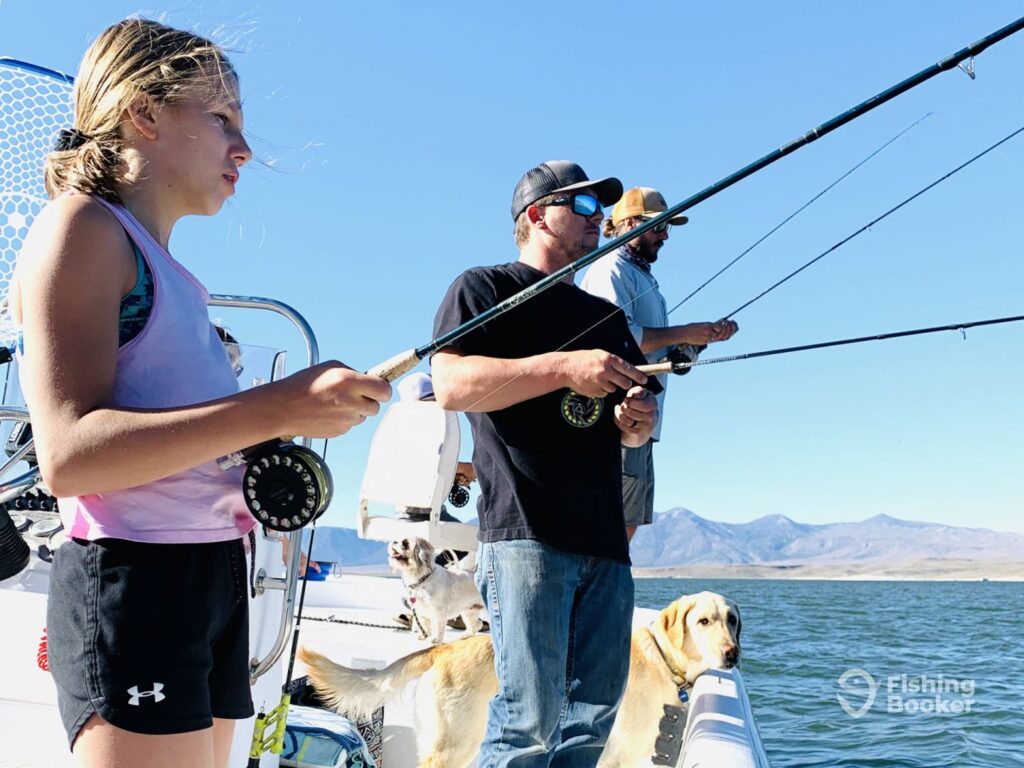
One of the best things about fishing in Mammoth Lakes is that there’s a style for every angler. Whether you’re looking to wade quietly with a fly rod, cast light tackle from shore, or team up with a local guide to unlock the region’s hidden gems, there’s something for everyone. With so many lakes, streams, and alpine creeks to choose from, the real challenge is deciding where to start first.
Fly fishing is a classic choice here, and it’s easy to see why. Picture delicate casts landing dry flies on crystal-clear streams, or drifting nymphs in quiet backcountry lakes surrounded by towering pines and granite peaks.
For those who prefer light tackle, spinning rods and small lures are perfect for chasing Trout near the shorelines, rocky inlets, or around the submerged logs where these fish love to hide.
Want to make the most of your time on the water? Booking a local guide is a game-changer here. These experts know exactly where the fish are biting, which flies or lures to use, and can help you fine-tune your technique. Some guides even offer trips out to the more remote lakes for Golden Trout and an extra dose of adventure.
Where to Go Fishing in Mammoth Lakes
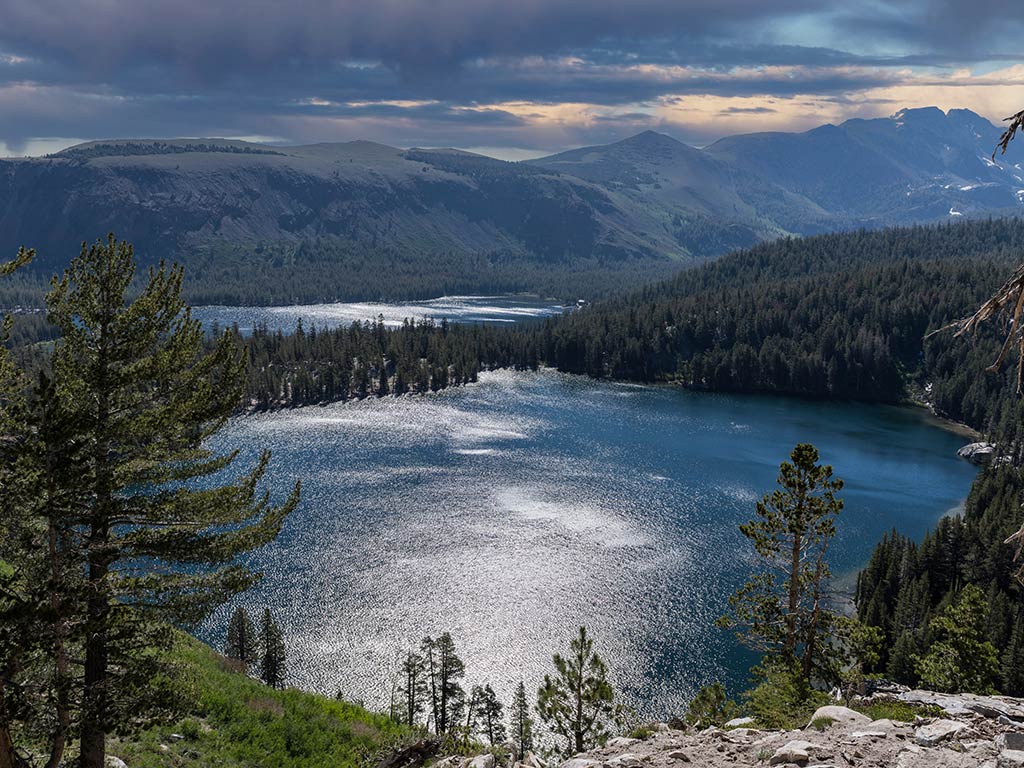
From well-known hot spots to hidden gems tucked away in the Sierra backcountry, there’s no shortage of places that promise an awesome day on the water. Here are a few must-visit spots to add to your list:
- Lake Mary. The largest of the Mammoth Lakes, Mary (pictured above) is well-stocked with Rainbow, Brown, and Brook Trout. The marina here makes charter fishing easy, and there are plenty of spots along the shore for casting flies or lures. Early mornings and evenings here in particular are pure magic.
- Twin Lakes. If you like your fishing with a side of postcard scenery, Twin Lakes is the place to be. These two connected lakes are famous for their easy access, calm waters, and steady Trout bite. The upper lake is especially popular for fly fishing, while the lower lake’s docks and guides make it perfect for light tackle fans.
- Convict Lake. Don’t let the name fool you, the fishing here is anything but criminal! Nestled beneath dramatic cliffs, Convict Lake is legendary for trophy-sized Rainbow Trout and healthy stocks of Browns. Shore fishing is productive here, but a local guide will help get you out to deeper waters where the big ones lurk.
- Hot Creek. Just a short drive from town, this stream is one of California’s most iconic fly fishing destinations. Clear waters, healthy insect hatches, and wild Trout make it a great place to test your casting skills. Just remember it’s catch-and-release only, and barbless hooks are required.
- Crowley Lake. This gigantic reservoir just south of town is a local favorite for a reason. It’s famous for its big Trout – think a plethora of Rainbows and Browns – and its unique fishing scene. Many anglers come here to drift just offshore and target Trout cruising the weed beds. The marina has rentals and guides ready to get you on the fish.
When to Go Fishing in Mammoth Lakes
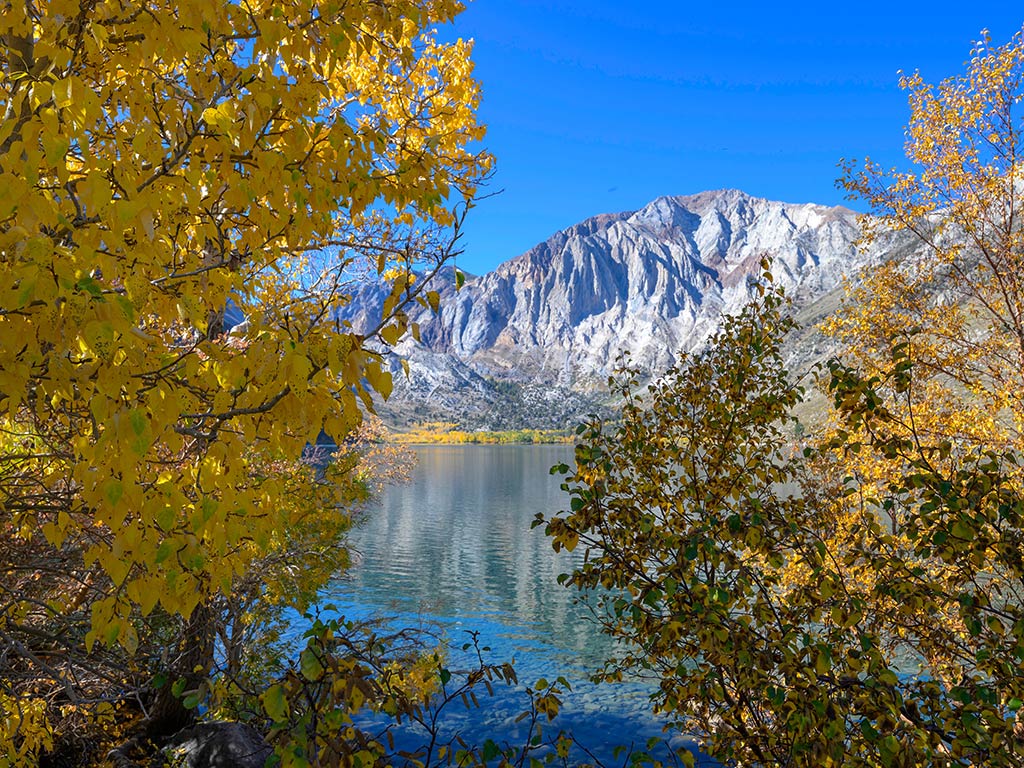
The best time to fish in Mammoth Lakes really depends on what you’re hoping to hook into – and how you’d like to catch it. For the widest variety and the best weather, plan your trip between late spring and early fall. This is when the mountain lakes and streams are at their most inviting, and the fish are feeding eagerly in the cold, clear Sierra waters.
Rainbow Trout fishing peaks in spring and early summer, right after the lakes are stocked and the water is rich with insect life. Brown Trout, on the other hand, put on their best show in the fall, when the temperatures drop and they move closer to shore.
Brook Trout thrive all summer long in the cool streams and shaded lake edges, while, if you’re dreaming of catching a Golden Trout, aim for mid to late summer. The waters are easily accessible and the weather is just right for a scenic hike to those hidden backcountry gems. Early mornings and evenings tend to bring the most bites, especially for fly anglers.
Mammoth Lakes Fishing Regulations

Ready to try your luck fishing in Mammoth Lakes? Before you head out, remember that anyone 16 years or older needs a valid California fishing license. This applies to both residents and visitors, with options available for single-day, multi-day, or annual licenses.
Fishing in Mammoth Lakes means following specific rules to protect the local fish populations. It’s important to check the latest regulations on the California Department of Fish and Wildlife site before your trip. Different species have unique seasons, size limits, and daily catch limits to keep the fishing here sustainable:
- Rainbow Trout. Open year-round with a daily limit of five fish, but only two can be longer than 10 inches.
- Brown Trout. The season is open all year, with a daily limit of two fish and a minimum size of 12 inches.
- Brook Trout. Open season year-round with a daily limit of five fish; no size restrictions.
- Golden Trout. Protected and catch-and-release only. Make sure to handle carefully.
Mammoth Lakes Fishing FAQs
Mammoth Lakes: Mammoth Fishing Opportunities!
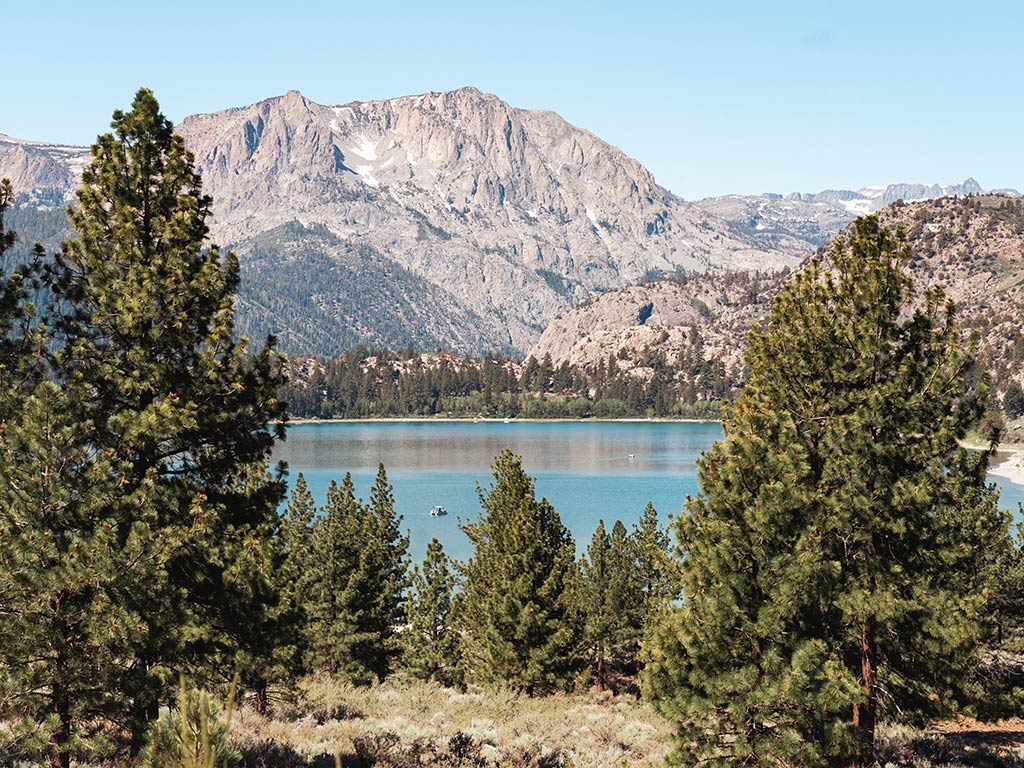
Whether you’re casting from a peaceful creek or cruising the open waters of a shimmering lake, Mammoth Lakes delivers an unforgettable fishing experience at every turn. It’s packed with fishing spots that deliver mammoth views – and even bigger memories. Just bring your sense of adventure. The fish are waiting!
Have you ever been fishing in Mammoth Lakes? What did you catch? Any secret spots or tips you’d like to share? Let us know in the comments below!


